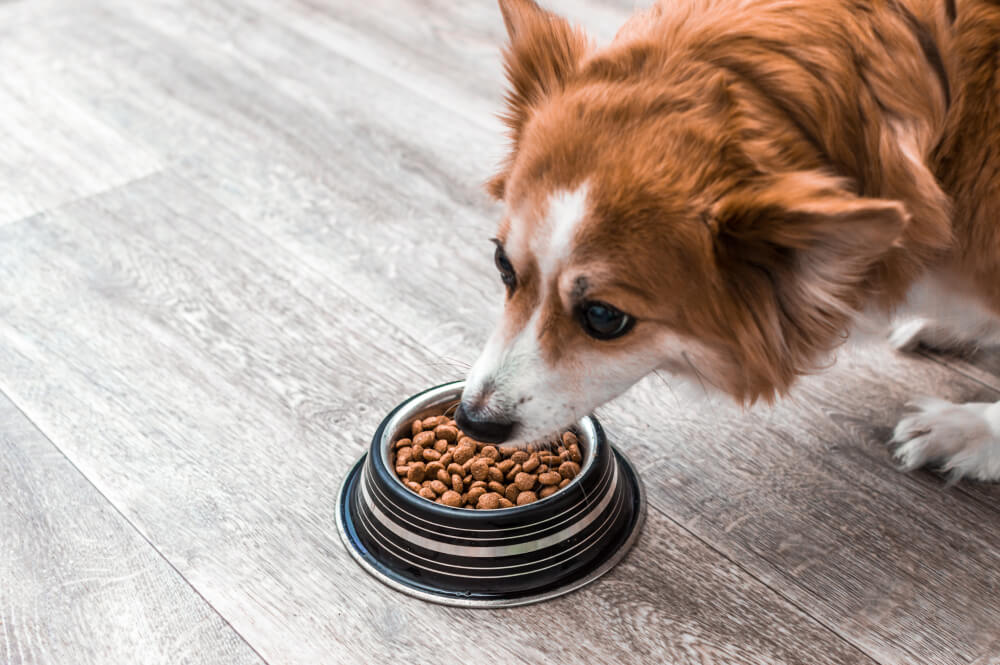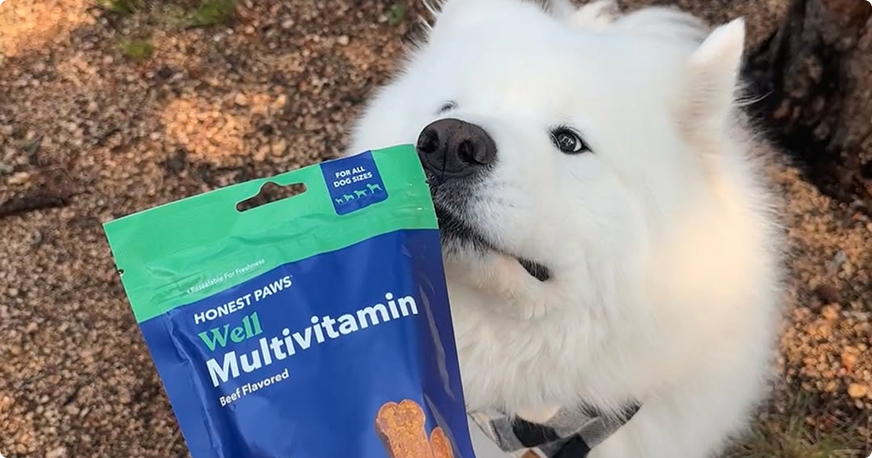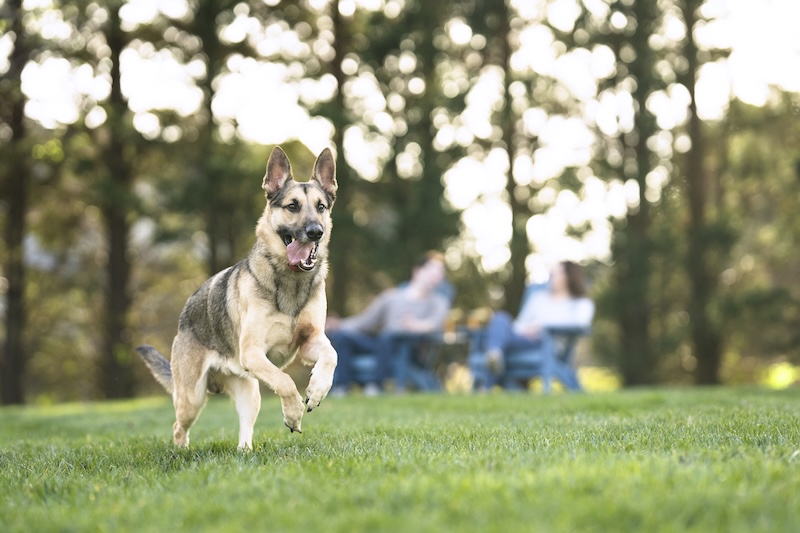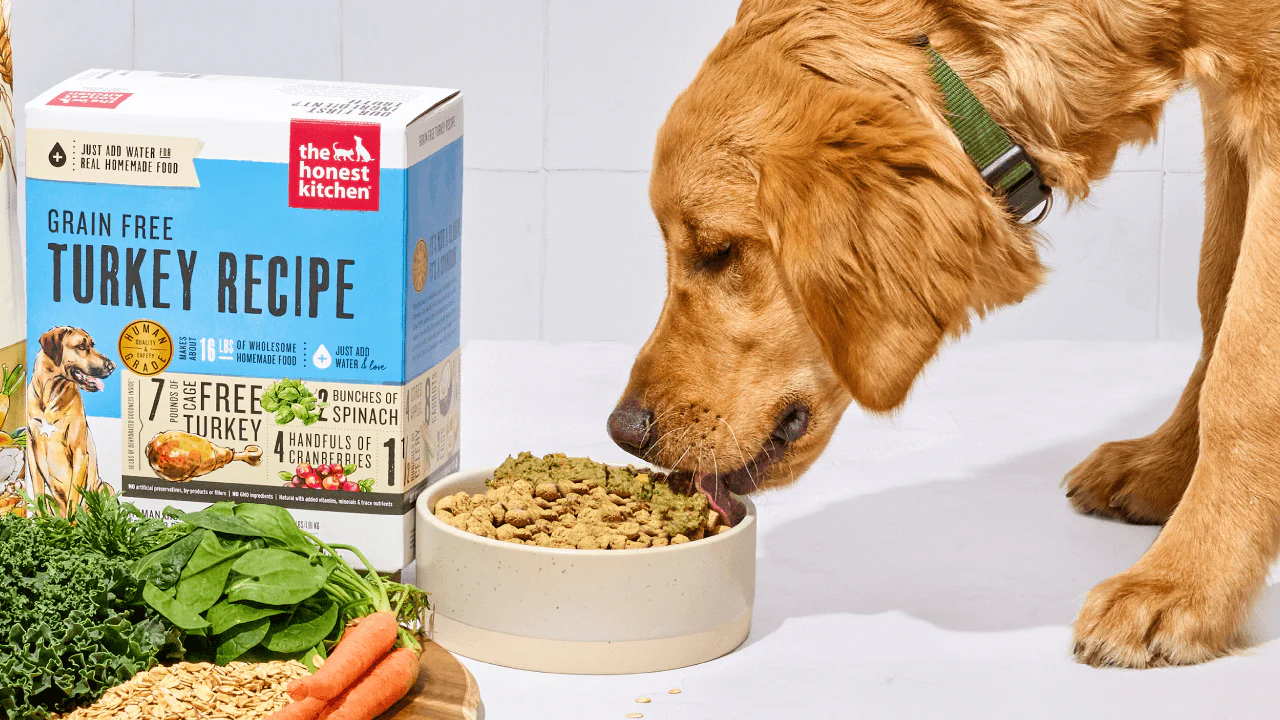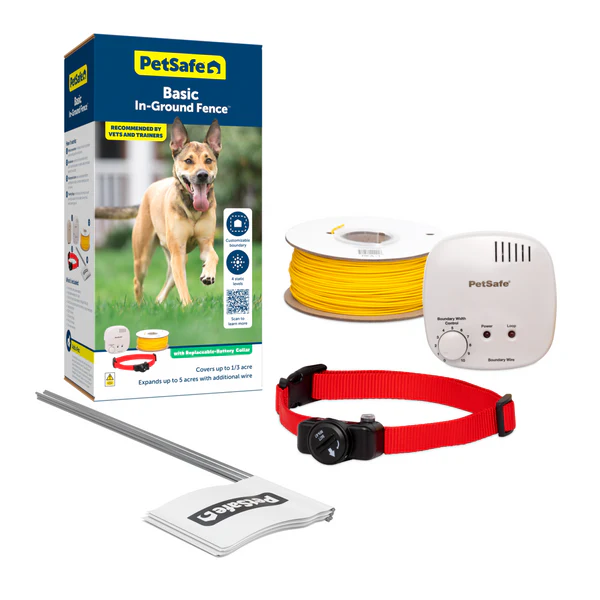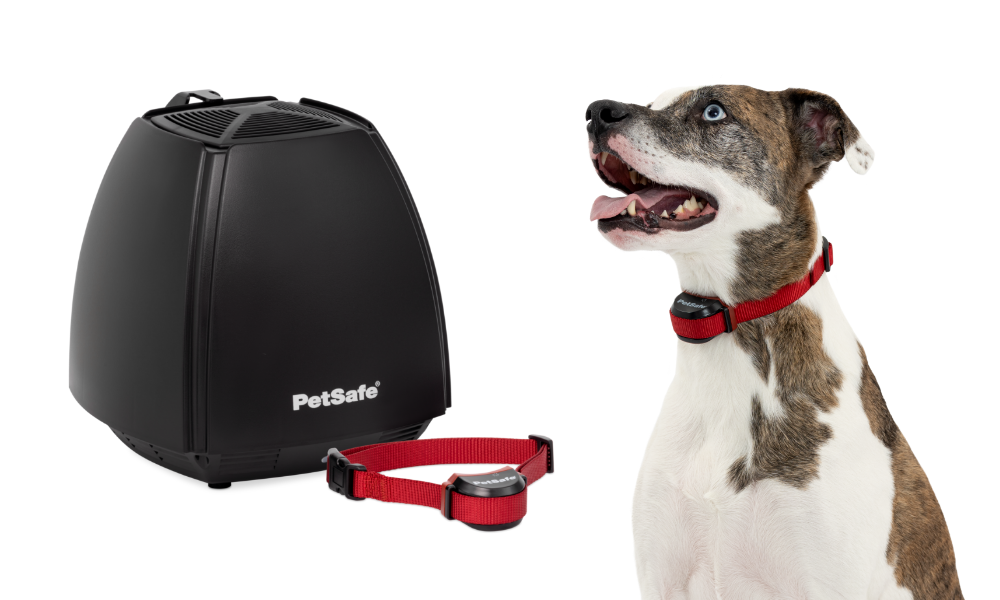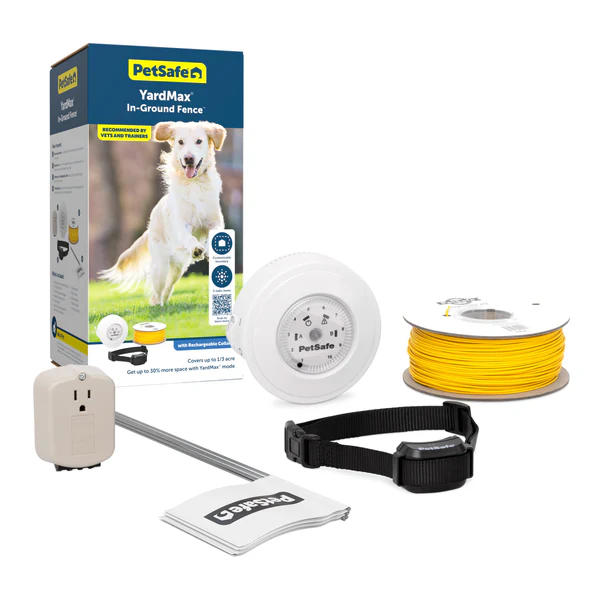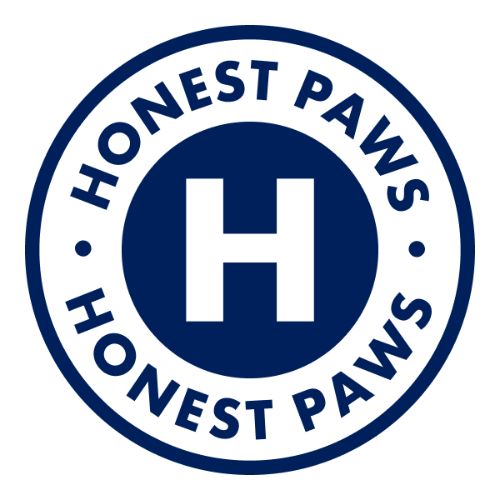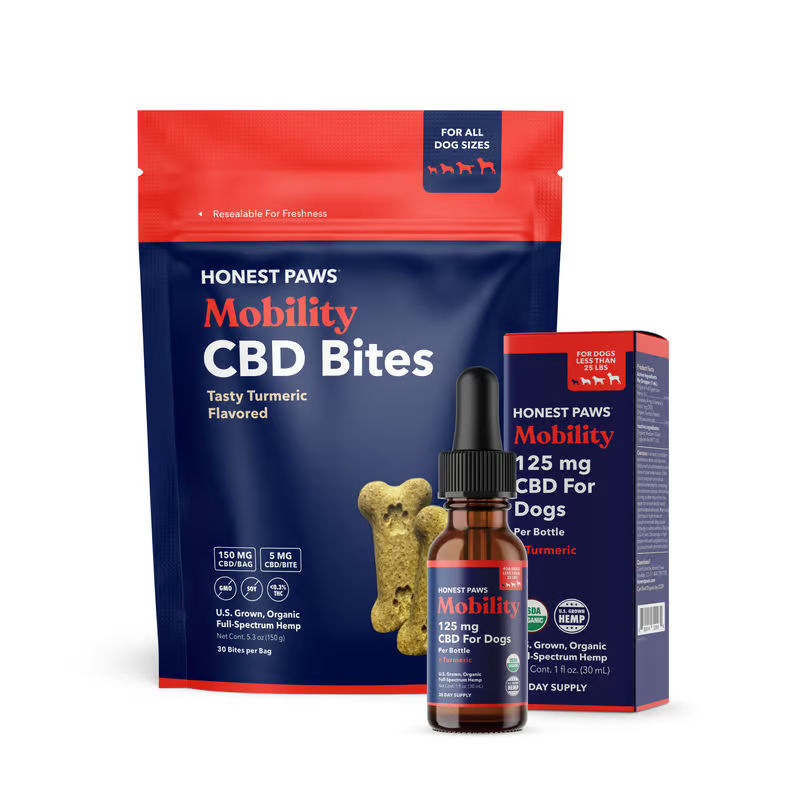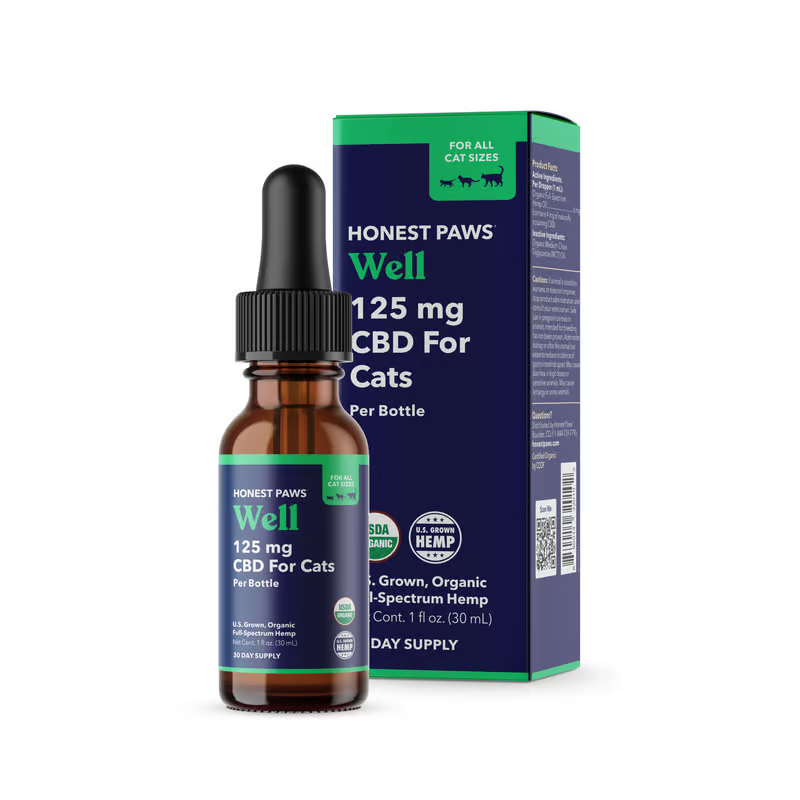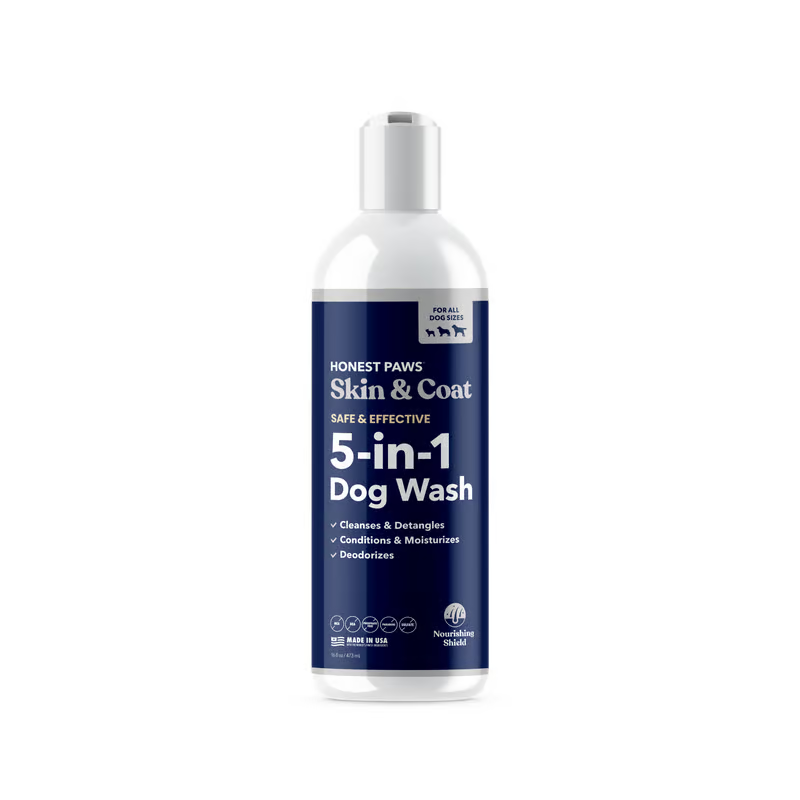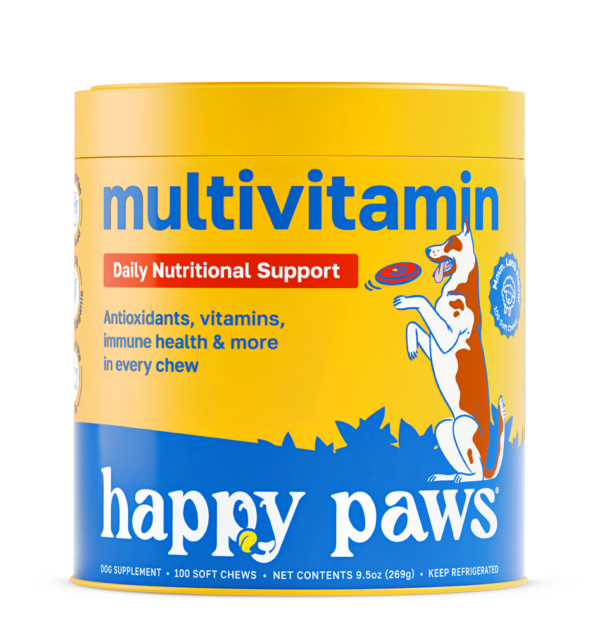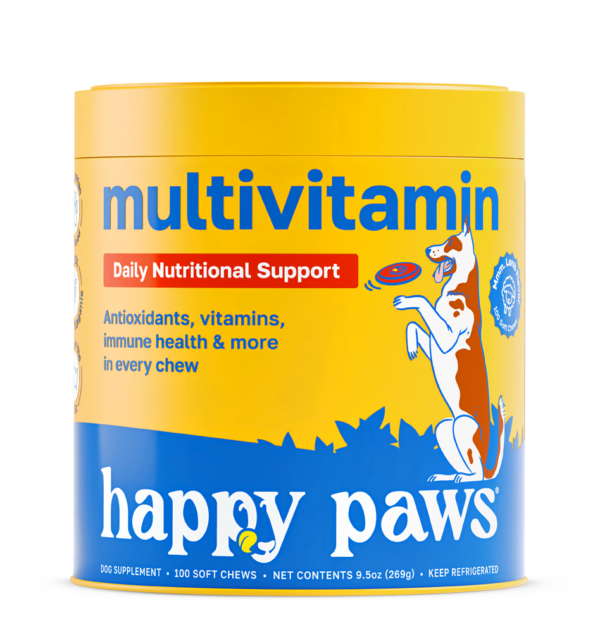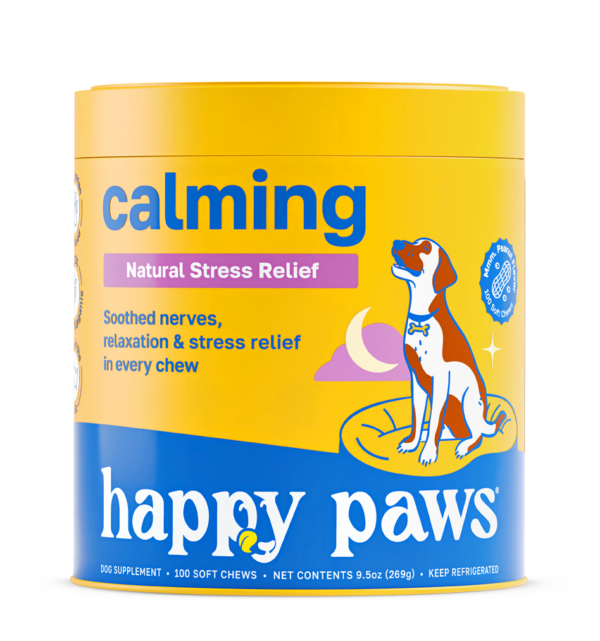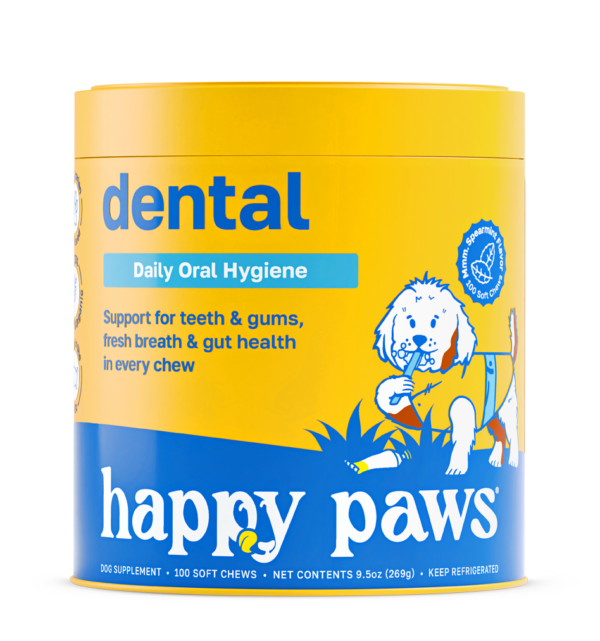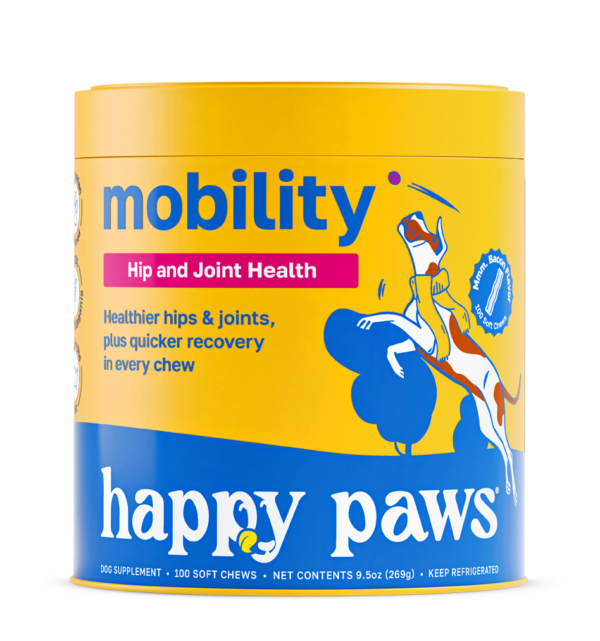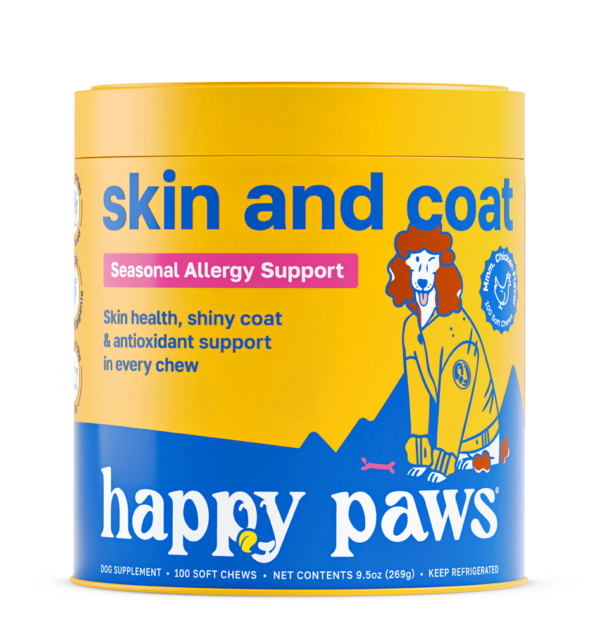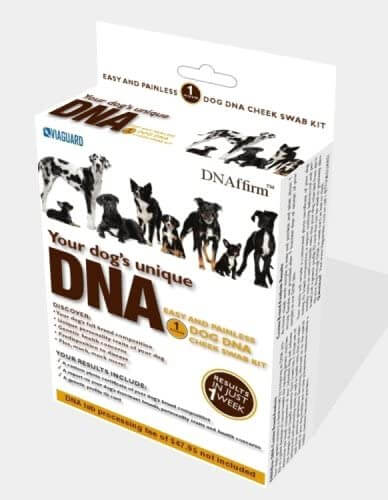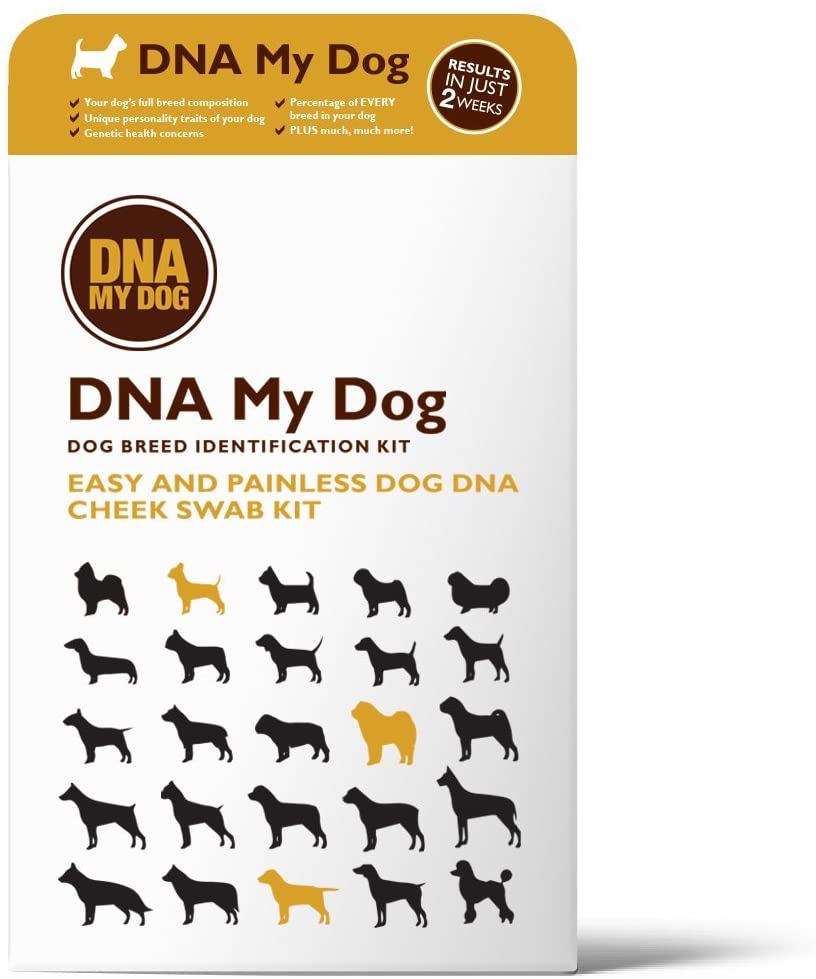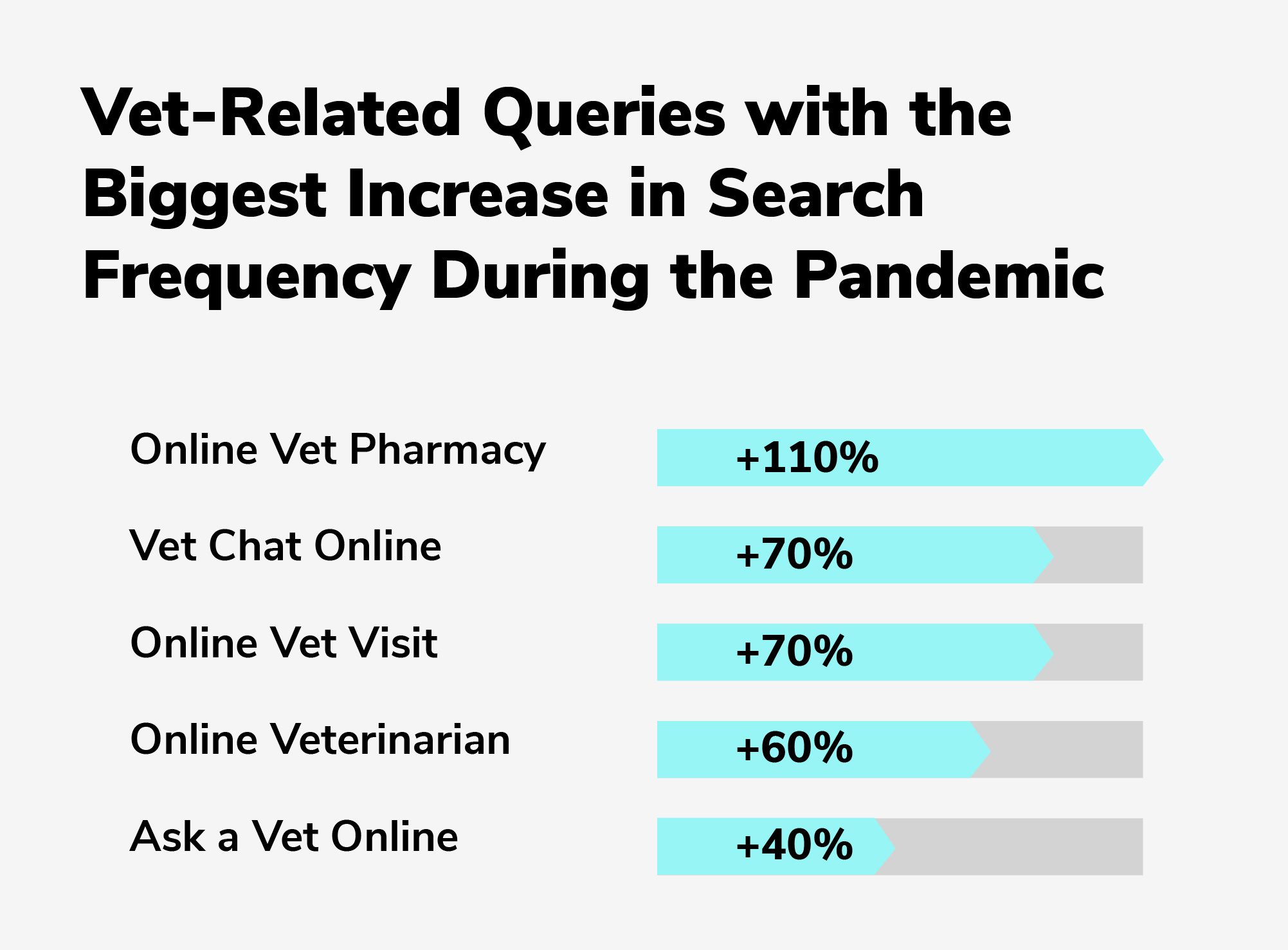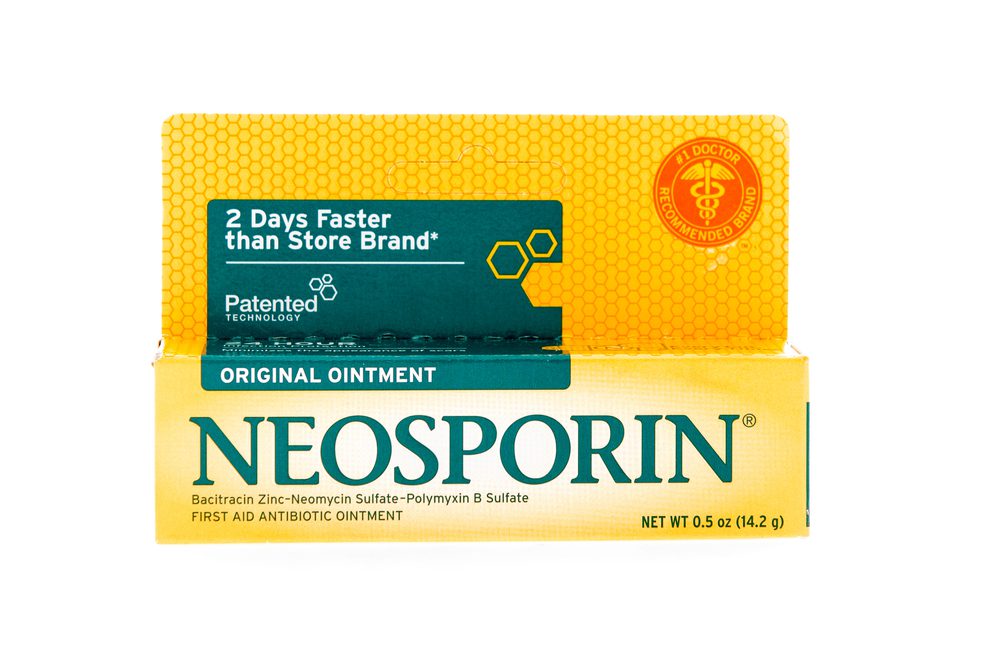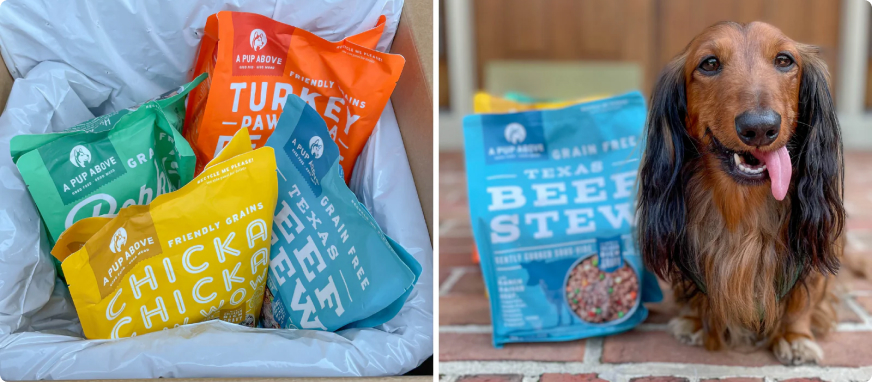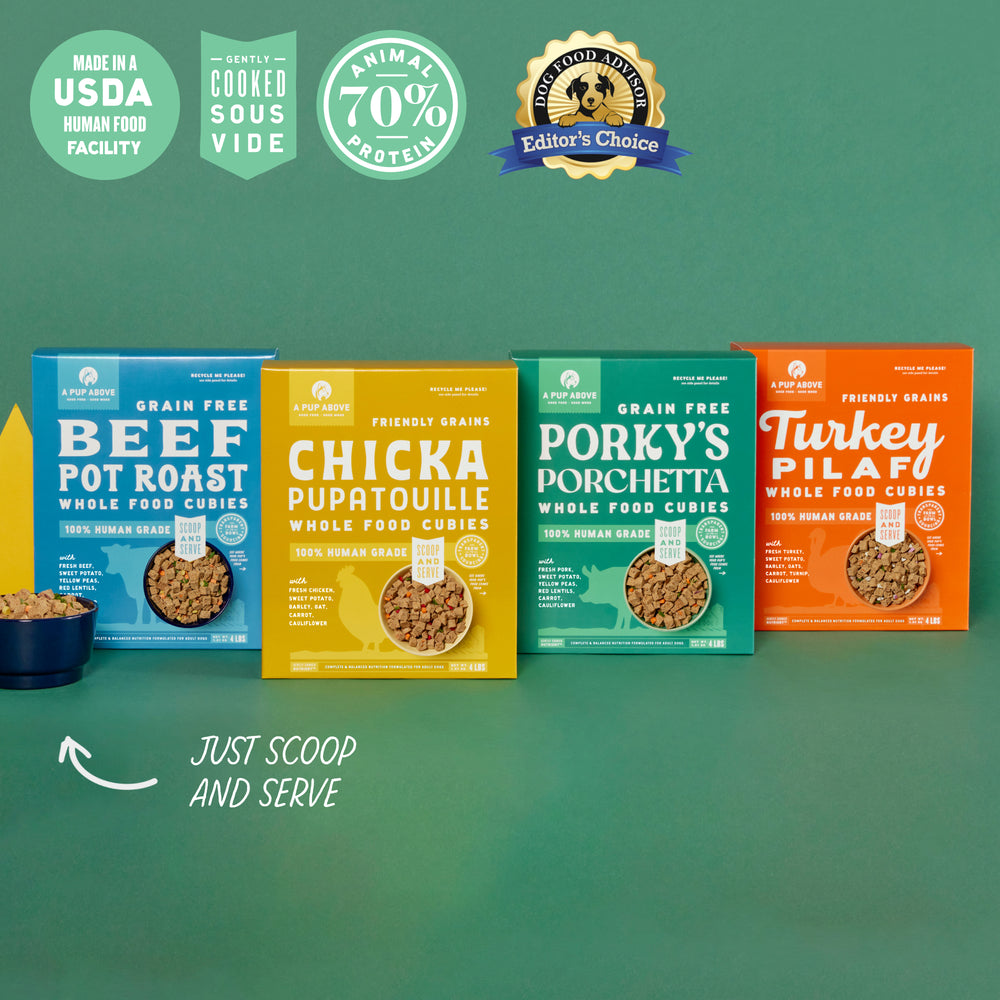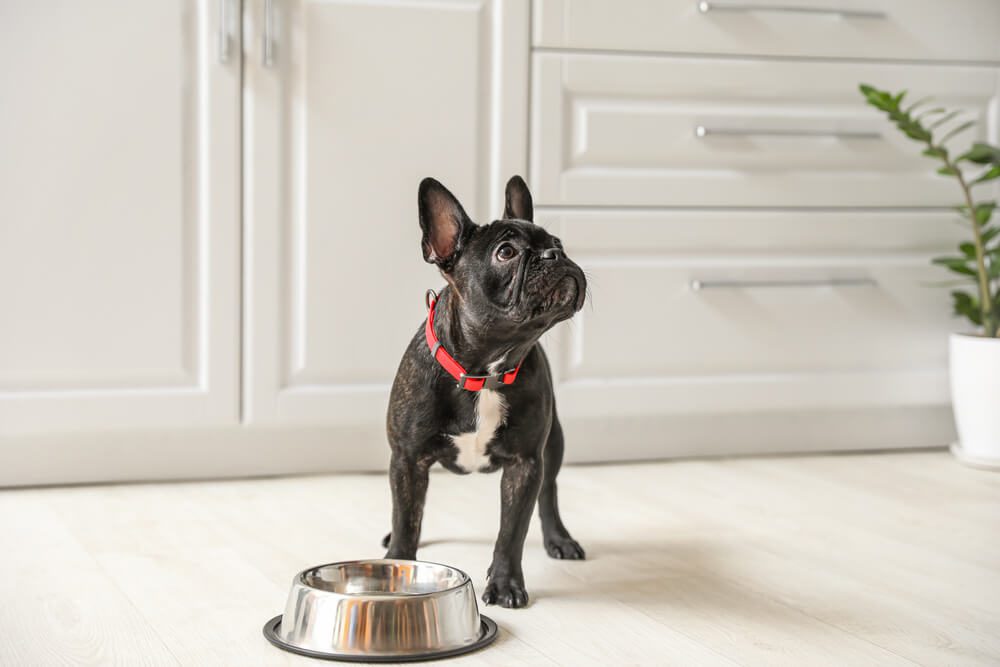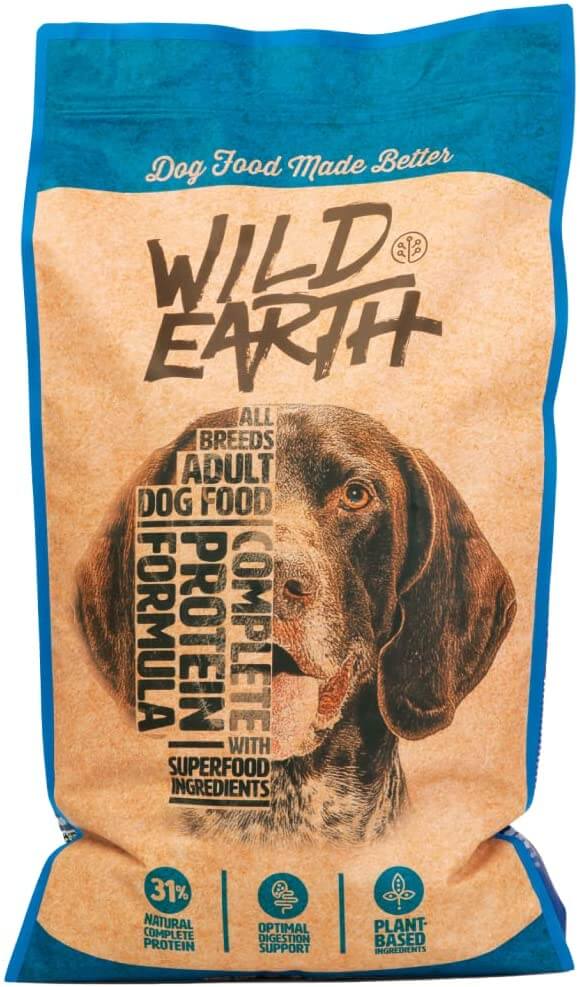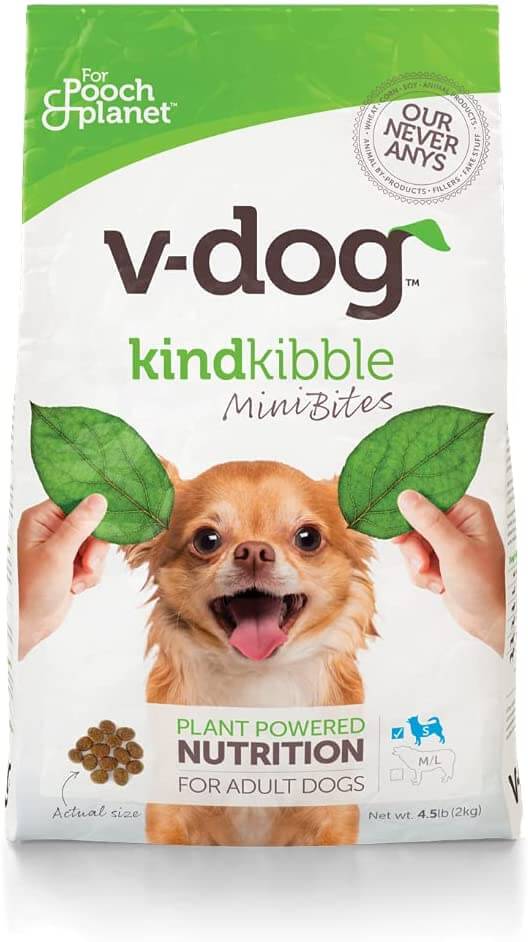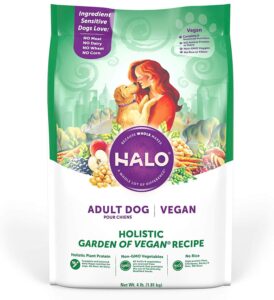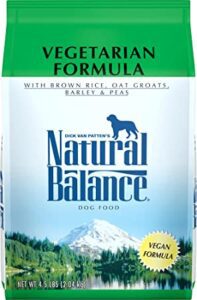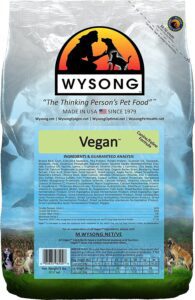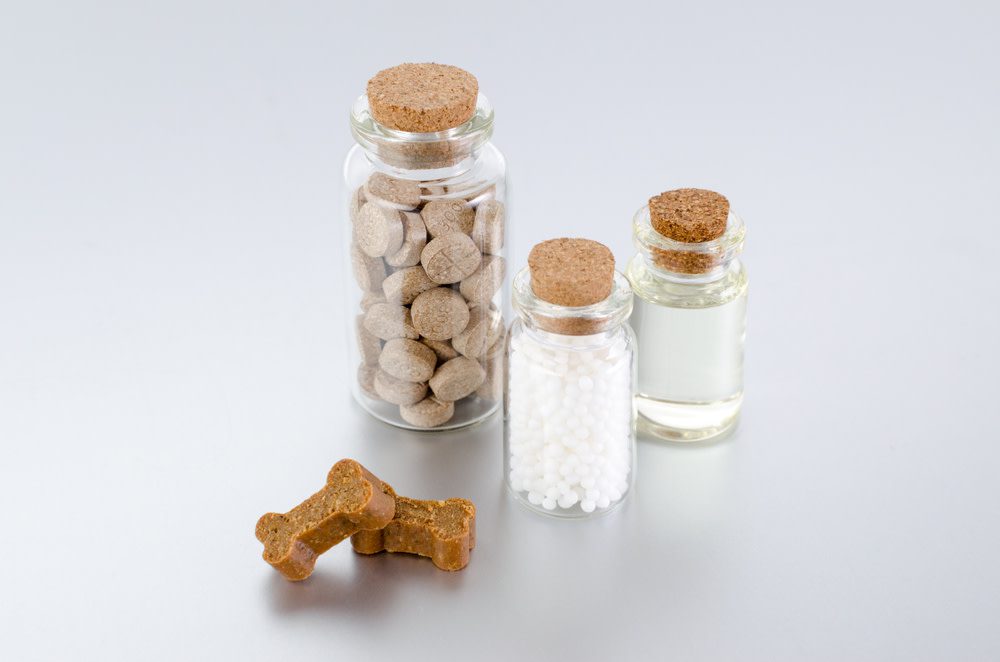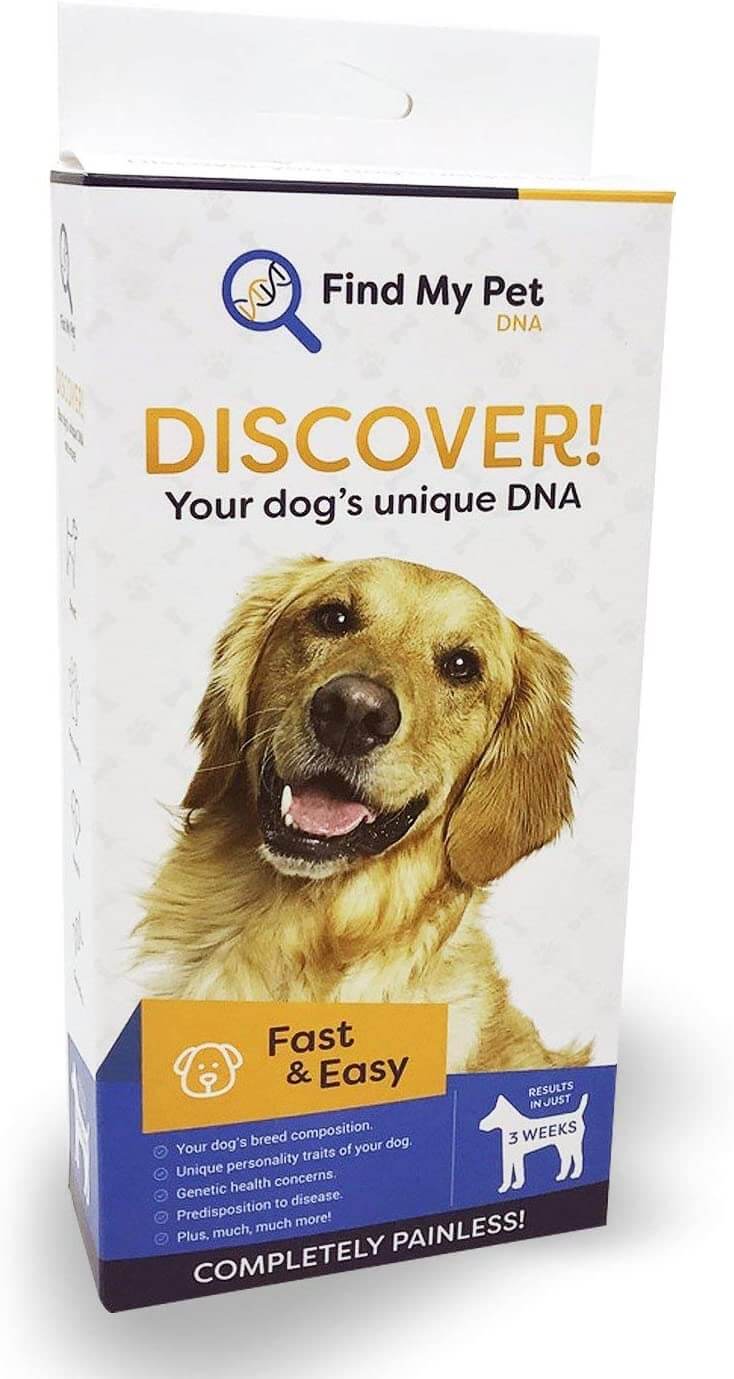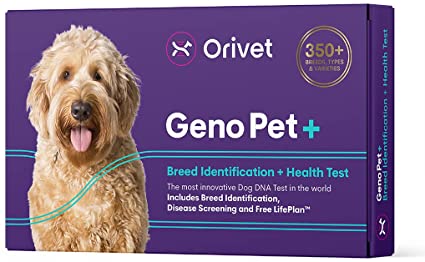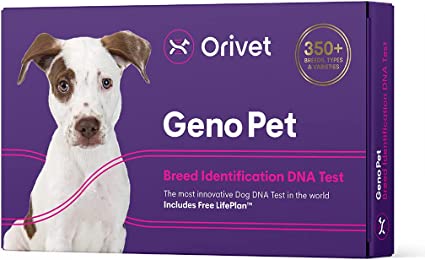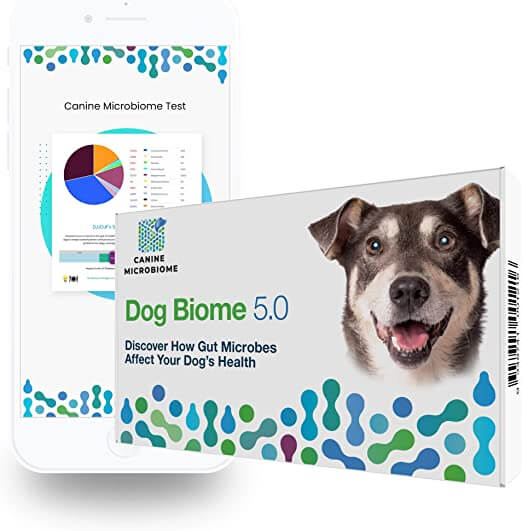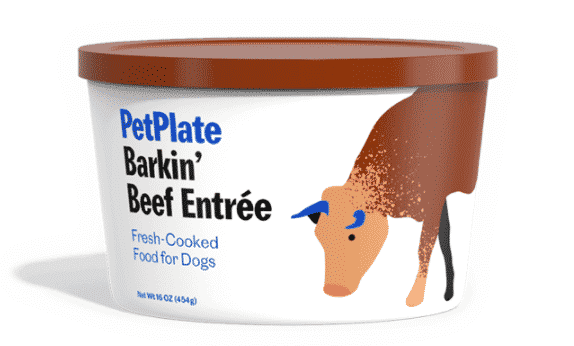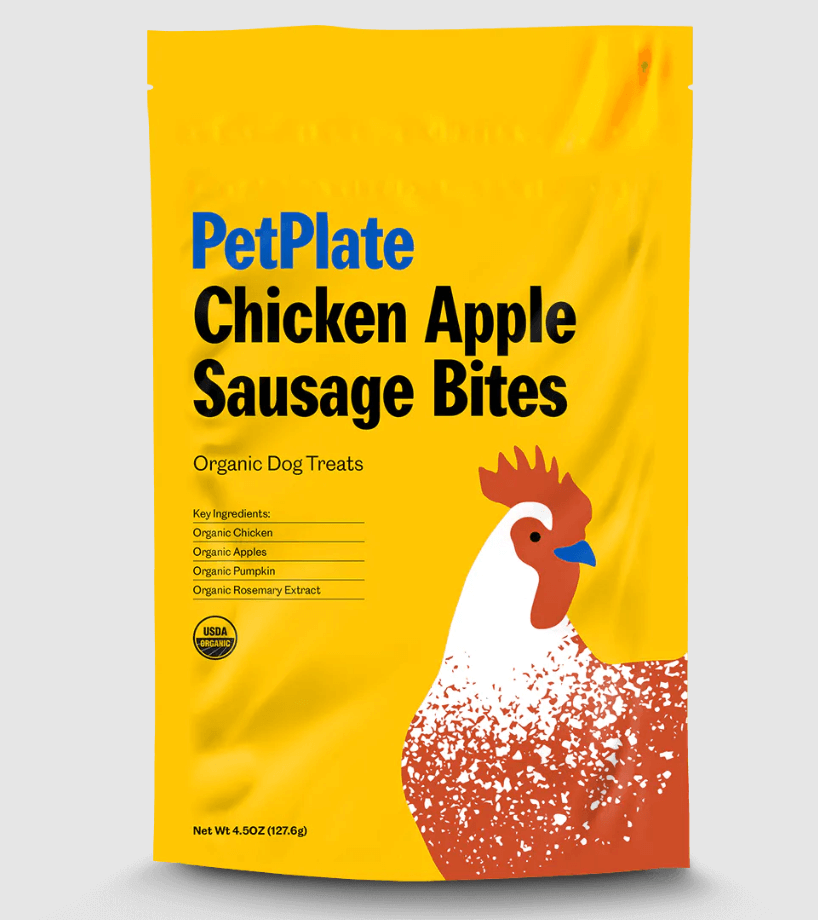If you’re wondering if your dog can eat raw chicken, you certainly wouldn’t be the first dog owner to ask yourself that question. Choosing the right food plays a crucial role in maintaining a dog’s overall health and longevity. Raw meat can often be a topic of debate among pet owners, especially when it comes to poultry. Chicken for dogs offers a rich source of protein, essential amino acids, and nutrients that support muscle development, immune function, and skin health. When asking, ‘Can dogs eat raw chicken?’ It is essential to understand that while many dogs can tolerate it, raw poultry poses significant risks if not handled properly. Only specific parts, such as raw chicken wings and necks, are generally considered safe due to their soft bones; however, thorough hygiene and proper sourcing are essential to minimize bacterial contamination.
When feeding dogs raw chicken with bones, it is crucial to avoid cooked or brittle pieces that pose choking hazards. The practice of feeding dogs raw chicken supports a biologically appropriate diet; however, raw chicken must be free of additives and hormones, and it must be stored and thawed by food safety protocols. Some dogs experience allergic reactions or digestive issues when exposed to raw chicken, especially if chicken becomes a daily staple. For dogs with sensitivities, rotating proteins or undergoing allergy testing is recommended. While a dog ate raw chicken once without issues, regular feeding depends on tolerance and individual health. Chicken becomes problematic when overfed, undercooked, or contaminated, especially for dogs with weakened immune systems or underlying health conditions.
Why Is Raw Chicken Good for Dogs?
Raw chicken does have the potential to offer several nutritional benefits that support canine health when sourced and prepared correctly. As a natural protein source, it contains essential amino acids that aid in muscle development, tissue repair, and immune system function. Raw chicken also provides a balanced ratio of phosphorus and calcium, especially when the bones are included, which supports joint health and skeletal strength. Many advocates of raw feeding claim that dogs digest raw meat more efficiently due to their carnivorous physiology. “Raw meat-based diets show slightly better clinical health scores compared to kibble-fed dogs, but urinalysis results were similar between diet groups,” according to the study by Sandri, M., Conte, G., Monego, D., Stefanon, B., & Sgorlon, S. titled “Raw meat-based diet influences fecal microbiome and end products of fermentation in healthy dogs” published in the BMC Veterinary Research in 2016. These findings support feeding raw chicken to dogs as part of a biologically appropriate diet. Nevertheless, the question, ‘Can dogs have raw chicken?’ continues to be relevant among pet owners, particularly when examining its positive effects on digestion and energy levels. Feeding raw chicken as part of a rotational diet also introduces variety and prevents protein-specific sensitivities.
When Can Dogs Have Raw Chicken?
Dogs can benefit from raw chicken under very specific conditions that prioritize safety, digestion, and nutritional value. Feeding raw chicken to your pet should not be taken lightly and requires strict guidelines to minimize the risk of bacterial contamination and ensure a balanced diet. The following conditions define when dogs have raw chicken:
- Sourced from reputable suppliers: Raw chicken must come from trusted providers that follow strict hygienic processing standards and avoid the use of harmful additives or antibiotics.
- Fed fresh or properly frozen: Raw chicken must be fresh or frozen for at least three days to kill potential parasites such as Toxoplasma gondii.
- Prepared without seasoning or marinades: Chicken must be served plain, without salt, spices, garlic, or onion, which are toxic to dogs.
- Offered in appropriate portions: Raw chicken must be given in sizes suitable for the dog’s breed and chewing ability to avoid choking or digestive issues.
- Bones are raw and intact: Only soft, raw bones like wings or necks are safe; cooked bones splinter and pose serious health risks.
- Given to healthy dogs: Raw diets are suitable for dogs with robust immune and digestive systems. However, puppies, seniors, or dogs with immunocompromised conditions require veterinary guidance before transitioning to a raw diet.
- Introduced gradually: Sudden changes in diet can upset digestion; raw chicken should be introduced slowly, with observation for any adverse reactions.
When Is Raw Chicken Bad for Dogs?
Raw chicken is bad for dogs when certain health risks and conditions are present. Dogs with compromised immune systems, such as seniors, puppies, or those undergoing treatment for chronic illness, have a hard time fighting off pathogens found in raw poultry. Raw chicken often contains bacteria like Salmonella and Campylobacter, which pose a serious threat to both dogs and household members through cross-contamination. Dogs with food sensitivities or protein allergies often also exhibit adverse reactions to chicken, displaying symptoms such as itching, gastrointestinal upset, or ear infections. In such cases, questions like ‘Is raw chicken good for dogs?’ demand individualized assessment. Feeding raw chicken to your dog also becomes problematic when the meat is improperly stored, thawed, or handled without strict hygiene, increasing the bacterial load. Ingestion of large bones or unsafe parts, such as those with sharp edges or splintering cartilage, can lead to choking or internal injury.
When a dog eats raw chicken without proper preparation or close supervision, the risk of gastrointestinal distress or parasitic infection increases significantly. Dogs prone to pancreatitis or with digestive disorders are especially vulnerable.
Can Dogs Eat Raw Chicken Breast?
Yes, dogs can eat raw chicken breast, but the practice requires caution due to associated health risks. Raw chicken breast offers lean protein and essential amino acids that support muscle development and energy metabolism. However, it lacks the calcium and organ-based nutrients necessary for a balanced canine diet. Feeding plain chicken breast alone leads to long-term nutritional deficiencies. Additionally, raw poultry poses a risk of bacterial contamination, including Salmonella and Campylobacter, which can affect dogs and increase exposure risks for humans through contact. Questions like ‘Is raw chicken good for dogs?’ have gained popularity due to the rise of raw feeding. Yet, the dangers of improper handling, imbalanced diets, and foodborne illness must be carefully evaluated. Although raw chicken for dogs, in the form of muscle meat, appears beneficial, over relying on bone or organ supplementation can undermine dietary completeness. While some raw feeders include chicken breast as part of a rotation, veterinary nutritionists recommend balancing it with additional sources of fat, fiber, and micronutrients. So, in theory, the answer to ‘Can dogs have raw chicken breast?’ is yes, but its safety and efficacy depend heavily on preparation, balance, and the dog’s health status.
Can Dogs Eat Raw Chicken Wings?
Yes, dogs can eat raw chicken wings, but this feeding practice presents both nutritional benefits and potential hazards. Raw chicken wings provide a natural source of calcium and phosphorus from the bones, support dental hygiene through chewing, and contribute to jaw strength. However, improperly sized wings or aggressive swallowing increases the risk of choking or gastrointestinal injury. It’s not a black-and-white answer, and the question, ‘Are raw chicken wings good for dogs?’ depends heavily on the dog’s size, chewing behavior, and overall health status. Bones must remain uncooked to avoid splintering, but even raw, they require supervision.
The broader safety of raw feeding continues to raise concerns, especially when cross-contamination or the presence of foodborne pathogens, such as Salmonella, is involved. In the context of popular queries such as ‘Can I give my dog raw chicken?’ Many owners turn to wings as a manageable solution; however, a lack of balance in nutrients like fiber and organ content limits their long-term suitability.
Can Dogs Eat Raw Chicken Skin?
No, raw chicken skin for dogs is not recommended due to its high-fat content and potential to trigger digestive issues. While chicken skin offers some energy-dense calories and flavor, it lacks essential nutrients. It poses a risk for pancreatitis, especially in dogs with sensitive stomachs or underlying metabolic conditions. The question ‘Is raw chicken skin good for dogs?’ is often brought up during raw feeding discussions, but the risks generally outweigh the benefits. Excess fat from chicken skin in dog food contributes to weight gain, inflammation, and poor stool quality.
Additionally, raw chicken skin is prone to harboring bacteria such as Salmonella, which increases the risk of foodborne illness in both dogs and humans. As part of evaluating whether dogs can eat chicken in its entirety, the skin remains the least advisable component.
Can Dogs Eat Raw Chicken Feet?
Yes, dogs can eat raw chicken feet, and these are often included in raw feeding programs due to their nutritional and dental benefits. Raw chicken feet are a natural source of glucosamine and chondroitin, which support joint health, particularly in aging or active dogs. Their crunchy texture also promotes dental hygiene by helping reduce tartar buildup. However, the answer to the question ‘Are raw chicken feet good for dogs?’ depends on proper preparation and handling. Chicken feet must be thoroughly cleaned, with claws trimmed to prevent mouth or intestinal injury. Despite their benefits, raw chicken feet, like all poultry parts, carry a risk of bacterial contamination. It’s a natural concern to wonder, ‘Can dogs get salmonella from raw chicken?’ especially when hygiene is inadequate or when immunocompromised dogs are involved. Chicken feet are often considered one of the safer bone-in options due to their size and digestibility. Still, for young dogs, the question ‘Can puppies eat raw chicken?’ requires a veterinary assessment before inclusion. In the context of feeding dogs chicken as part of their daily diet, raw feet serve more as an occasional treat rather than a complete meal component. If sourced as part of a raw chicken-for-dogs regimen, safe sourcing, portion control, and individual tolerance are emphasized.
Can Dogs Eat Raw Chicken Gizzards?
Yes! Dogs can eat raw chicken gizzards, as these organ meats provide a rich source of essential nutrients. Gizzards are muscular stomach organs packed with protein, iron, zinc, and B vitamins, which support energy metabolism, immune health, and muscle maintenance. Incorporating them as part of a raw or homemade diet leads to a more biologically appropriate feeding plan. The question ‘Are raw chicken gizzards good for dogs?’ is often raised by pet owners seeking to diversify meat sources. And as long as they incorporate it in moderation, it’s perfectly safe. Overfeeding gizzards can lead to a dietary imbalance, especially if other organ meats or muscle meats are excluded. To address the question ‘Can dogs eat raw chicken skin?’, the same handling precautions should be taken to avoid bacterial contamination. Within the context of chicken gizzards for dogs, they function best when included as 10–15% of a raw feeding ratio alongside bones and muscle meat. As humans, we struggle with the concept of eating organs, but these parts offer concentrated nutrients not found in skeletal muscle for our canine companions. For owners asking, ‘Can a dog eat raw chicken safely?’, gizzards are among the more digestible and beneficial parts. Still, they require balance and clean sourcing, much like concerns raised by raw chicken skin, which has more fat and fewer essential nutrients.
Can Dogs Eat Raw Chicken Liver?
Yes, dogs can eat raw chicken liver, as it serves as a highly nutritious component in raw feeding protocols. It is rich in vitamin A, iron, copper, and B-complex vitamins, raw liver supports vision, red blood cell production, and overall metabolic function. As a natural detoxifying organ, the liver provides concentrated nutrition; however, excessive intake can lead to hypervitaminosis A, a condition caused by an overabundance of vitamin A in the diet. Raw liver retains more nutrients compared to cooked liver, although hygiene in sourcing and handling becomes more critical. Chicken liver for dogs stands out as one of the most beneficial organs when included in appropriate quantities, typically 5% of the total canine diet. Compared to muscle meat, the liver carries a higher risk of contamination if improperly stored. Unlike the concern about the question ‘Can dogs have raw chicken bones?’, which presents mechanical risks, the liver’s concern lies more in portion control and sourcing quality. Therefore, raw chicken liver offers significant health benefits for dogs. Still, it requires careful feeding frequency and proper preparation by the dog’s owner to ensure optimal benefits.
Can Dogs Eat Raw Chicken Drumsticks?
Yes, dogs can eat raw chicken drumsticks, but again the practice requires careful supervision due to the size and density of the bones. Raw drumsticks offer nutritional value through high-quality protein, calcium, and phosphorus, which support muscle development and skeletal health. Their meaty texture also promotes natural chewing behavior and dental cleaning. Although it’s important to note that the thickness of the leg bone increases the risk of dental fractures or internal injury if swallowed without proper chewing. The question ‘Are raw chicken drumsticks good for dogs?’ depends on the dog’s size, chewing habits, and overall health. While nutritious, drumsticks present more mechanical risks than boneless cuts. Compared to chicken raw muscle meat and softer bones, drumsticks require experienced raw feeders and proper portioning. Therefore, raw drumsticks offer both benefits and risks and are best suited for dogs accustomed to raw, meaty bones, provided they are under close observation.
Can Dogs Eat Raw Chicken Thighs?
Yes, dogs can eat raw chicken thighs, and these cuts offer a rich combination of protein, fat, and bone that is ideal for supporting muscle mass and joint function. Raw chicken thighs contain dark meat, which is more flavorful and nutrient-dense than white meat, providing essential amino acids, iron, and zinc. The inclusion of the bone in raw form supports dental hygiene and calcium intake. However, the size and strength of the thigh bone present a moderate risk of tooth fractures or esophageal injury, particularly in small or aggressive chewers. Despite the nutritional benefits, it is essential to pay close attention to proper portion size, chewing behavior, and hygiene. When a dog eats raw chicken parts, such as thighs, there is also the potential for bacterial exposure, making sourcing and storage essential considerations. Chicken thighs serve best as part of a balanced, rotational diet and not as the sole protein source.
Can Dogs Eat Raw Chicken Bones?
Yes, dogs can eat raw chicken bones, and these are often included in biologically appropriate raw food diets due to their nutritional and dental benefits. Raw bones provide a natural source of calcium and phosphorus, which support bone density, muscle contraction, and nerve function. Chewing raw bones also stimulates the gums and helps reduce plaque buildup, improving oral hygiene. However, the answer to ‘Are raw chicken bones good for dogs?’ depends on factors such as size, bone type, and the dog’s chewing behavior. Soft, pliable bones, such as those in wings and necks, are generally safer compared to dense, weight-bearing bones, like those in drumsticks or thighs, which risk dental fractures or choking. Proper supervision is essential, especially when introducing raw meaty bones. In the context of chicken bones for dogs, raw options are considered safer than cooked bones, which become brittle and prone to splintering. Still, risks such as intestinal blockage or perforation remain possible if bones are swallowed whole or fed inappropriately. While raw chicken bones offer valuable enrichment and essential nutrients, they must be part of a well-balanced raw diet tailored to the dog’s size, health, and chewing behavior.
Can Dogs Eat Raw Chicken Eggs?
No, dogs must never be fed raw chicken eggs due to the risk of bacterial contamination and nutritional imbalances. Raw eggs often harbor harmful pathogens, such as Salmonella and E. coli, which lead to gastrointestinal infections in dogs and pose health risks to humans who handle the food. Raw eggs provide essential nutrients, including protein, essential fatty acids, and biotin. However, the avidin protein in raw egg whites binds to biotin, reducing its absorption, which leads to problems related to deficiency. While some advocates of raw feeding include raw eggs in canine diets, the risk of bacterial exposure outweighs the nutritional benefit when served uncooked. Chicken eggs for dogs are safer when cooked, as heat neutralizes avidin and kills harmful bacteria. Feeding whole, raw eggs also presents a choking hazard, primarily due to the sharp edges of the shell. Despite trending questions like ‘Can you feed dogs raw chicken?’, ‘Can my dog eat raw chicken?’ or ‘Can dogs eat chicken?’ Veterinary professionals recommend thoroughly cooking eggs before inclusion in a dog’s diet to ensure safety and nutrient absorption.
What Are the Signs That Your Dog Is Allergic to Chicken Eggs?
Egg allergies in dogs occur less frequently than allergies to proteins such as beef or dairy. Still, they are recognized as causes of food-related hypersensitivity. The immune system reacts to egg proteins, particularly those in the whites, triggering a variety of clinical signs. Common symptoms include persistent itching, inflamed skin, chronic ear infections, gastrointestinal upset (such as vomiting or diarrhea), and, in some cases, excessive paw licking or hair loss. These signs often resemble other types of allergies, making diagnosis challenging without an elimination diet or veterinary testing. Early recognition of food allergy signs and collaboration with a veterinary professional is essential for identifying triggers and managing symptoms effectively.
Can Puppies Eat Raw Chicken?
No, puppies must not eat raw chicken Puppies should not eat raw chicken due to the high risk of bacterial infections and nutritional imbalances during their early development. Their immature immune systems are less able to fight off pathogens like Salmonella and Campylobacter, which are often found in raw poultry. Introducing raw chicken before a puppy is 12 weeks old increases the chances of gastrointestinal illness, dehydration, and developmental issues.
Puppies need a carefully balanced diet to support their rapid growth, brain development, and bone formation. If raw feeding is considered later on, it must be done under veterinary supervision with precise dietary planning to avoid deficiencies in calcium, phosphorus, and essential vitamins. Until their digestive and immune systems mature, which usually happens after around 12 weeks, it is unsafe to include raw chicken in a puppy’s diet.due to the high risk of bacterial infections and nutritional imbalances during early development. Their immature immune systems are less equipped to combat pathogens such as Salmonella and Campylobacter, which are frequently found in raw poultry. Introducing raw chicken before 12 weeks of age increases the likelihood of gastrointestinal illness, dehydration, and failure to thrive. Puppies require carefully balanced nutrition to support rapid growth, brain development, and bone formation. Raw feeding, if considered later, demands veterinary supervision and precise dietary planning to avoid deficiencies in calcium, phosphorus, and essential vitamins. Until the digestive and immune systems fully mature, typically after the 12-week mark, it remains unsafe to include raw chicken in a puppy’s diet.
What Are the Health Benefits of Feeding Raw Chicken to Dogs?
Raw chicken can offer several nutritional benefits for dogs when prepared safely and incorporated into a balanced diet. As a lean source of protein, raw chicken supports muscle development, tissue repair, and energy production. It is rich in essential amino acids, B vitamins, zinc, iron, and phosphorus, all of which help maintain immune health, support metabolic function, and promote strong bones; when raw and appropriately sized, bones can also supply calcium and aid in dental hygiene through natural chewing behavior.
Advocates of raw feeding often highlight the potential benefits of raw chicken for dogs, such as improved coat quality, healthier skin, and reduced stool volume. Discussions about raw diets often raise questions such as, “Can my dog eat raw chicken?” or “Is raw chicken part of a dog’s ancestral diet?” While these advantages are noteworthy, it is crucial to prioritize safe preparation and supervision when considering whether to include raw chicken in your dog’s individualized nutrition plan. Despite these perceived advantages, safe preparation and supervision remain critical.
How to Prepare Raw Chicken for Your Dog?
Preparing raw chicken for dogs requires strict food safety protocols to minimize the risk of bacterial contamination and ensure a balanced nutritional intake. The following steps outline a safe approach.
- Source high-quality meat. Use fresh, human-grade chicken from a trusted supplier to reduce the presence of pathogens such as Salmonella and Campylobacter.
- Freeze before serving. Freeze raw chicken for at least 72 hours at -4°F (-20°C) to help kill potential parasites.
- Thaw properly. Defrost in the refrigerator, never at room temperature, to prevent bacterial growth.
- Sanitize the surface. Use separate cutting boards and utensils for raw meat, and disinfect all surfaces and tools immediately after preparation.
- Portion appropriately. Cut into suitable sizes based on breed and chewing behavior to avoid choking or digestive issues.
- Balance the diet. Combine raw chicken with organ meats, bone content, and supplements under the guidance of a professional to meet nutritional requirements.
- Feed when healthy. Only introduce raw chicken to dogs with mature immune systems and no underlying health issues, ideally after six months of age.
“Raw meat-based diets for dogs can contain pathogenic bacteria, highlighting the need for good hygiene during storage, handling, and feeding to limit potential health risks to animals and humans.” according to the study by Fernström et. al titled “Occurrence of Salmonella, Campylobacter, Clostridium and Enterobacteriaceae in raw meat-based diets for dogs” published in the journal Veterinary Record in 2019. Feeding raw chicken becomes safer when handled under these evidence-based guidelines and incorporated into a complete and balanced raw feeding plan.
What Are the Risks of Eating Raw Chicken for Dogs?
Unfortunately feeding raw chicken to dogs presents several health hazards, particularly due to the risk of bacterial contamination. These pathogens often lead to gastrointestinal illness, systemic infection, and long-term health complications. The following list outlines the primary raw chicken risks and associated consequences:
- Salmonella Infection: Raw chicken frequently harbors Salmonella bacteria, which cause symptoms such as vomiting, diarrhea, fever, and dehydration in dogs and increase zoonotic risk to humans in the household.
- Campylobacteriosis, caused by Campylobacter jejuni, results in symptoms including bloody diarrhea, abdominal pain, and lethargy. Puppies and immunocompromised dogs are particularly vulnerable to severe outcomes.
- Clostridium perfringens infection, a bacterium commonly found in undercooked poultry, produces toxins that contribute to gastrointestinal disturbances, including sudden-onset diarrhea and abdominal cramps.
- E. coli Contamination: Pathogenic strains such as E. coli O157:H7 cause acute gastrointestinal upset and, in rare cases, systemic illness and kidney damage.
- Listeriosis: Although less common, Listeria monocytogenes infection from raw meat causes fever, muscle stiffness, and neurological signs, especially in immunocompromised or pregnant dogs.
“Commercial raw meat-based diets for dogs and cats often provide deficient nutrients, nutritional imbalances, and high microbial contamination, highlighting the need for strict monitoring of their nutritional and microbiological quality,” according to the study by Dobenecker, B. et. al titled “From Nutritional Adequacy to Hygiene Quality: A Detailed Assessment of Commercial Raw Pet-Food for Dogs and Cats” published in Animals: an Open Access Journal from MDPI in 2022. The importance of understanding microbial threats and responsible dietary planning is absolutely crucial if pet parents decide to adopt a raw diet for their dogs.
What to Do if You Feed Your Dog Raw Chicken?
If a dog eats raw chicken, immediate monitoring for signs of illness or intolerance is necessary. Symptoms such as vomiting, diarrhea, lethargy, drooling, or abdominal discomfort often indicate bacterial contamination or digestive upset. In cases where the raw chicken was not intentionally given, such as from scavenging, trash, or unattended food, owners must assess how much was consumed and whether bones were ingested, as raw bones pose a risk of choking or intestinal obstruction. Dogs experiencing an adverse reaction to poultry protein also exhibit signs of food hypersensitivity. These signs include chronic ear infections, itchy skin, paw licking, or red, inflamed areas, which often indicate a chicken allergy in dogs. Veterinary evaluation becomes essential when symptoms persist or escalate, particularly for dogs with no prior exposure to raw foods. In situations involving accidental ingestion, such as when a dog eats raw chicken from the floor or trash, or when a dog eats raw chicken without supervision, clinical observation for at least 24 to 48 hours is necessary to ensure early detection of potential complications.
Can Dogs Get Salmonella From Eating Raw Chicken?
Yes, dogs can contract Salmonella from eating raw chicken, especially if the meat is not handled or sourced correctly. Salmonella present in raw chicken poses a direct threat to a dog’s gastrointestinal system, which can lead to symptoms such as vomiting, diarrhea, fever, abdominal pain, and lethargy. In severe cases, the infection may progress to septicemia or affect organs beyond the gut, particularly in puppies, elderly dogs, or those with weakened immune systems. According to a study by Reid-Smith, R., Weese, J., Lefebvre, S., and Boerlin, P. titled “Evaluation of the Risks of Shedding Salmonellae and Other Potential Pathogens by Therapy Dogs Fed Raw Diets in Ontario and Alberta,” published in the journal Zoonoses and Public Health in 2008, dogs that consumed raw meat were significantly more likely to test positive for Salmonella at least once during the year compared to dogs that did not eat raw meat.
Dogs can get Salmonella from raw chicken, regardless of how fresh or raw the meat appears. Even a small amount of underprocessed poultry, such as a raw chicken breast, can contain enough bacteria to trigger an infection. Minimally undercooked or seemingly clean poultry may still harbor harmful bacteria, including Salmonella enterica, which survives in uncooked flesh, juices, and on the surface of raw meat. Ensuring safe food handling and avoiding raw chicken altogether remain key to preventing these health complications.
